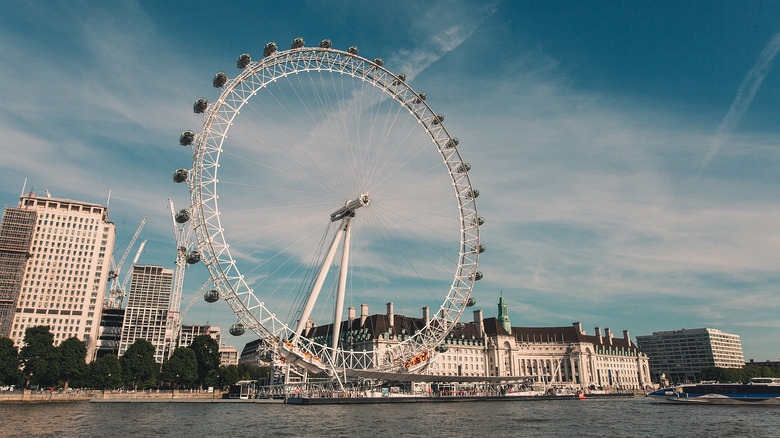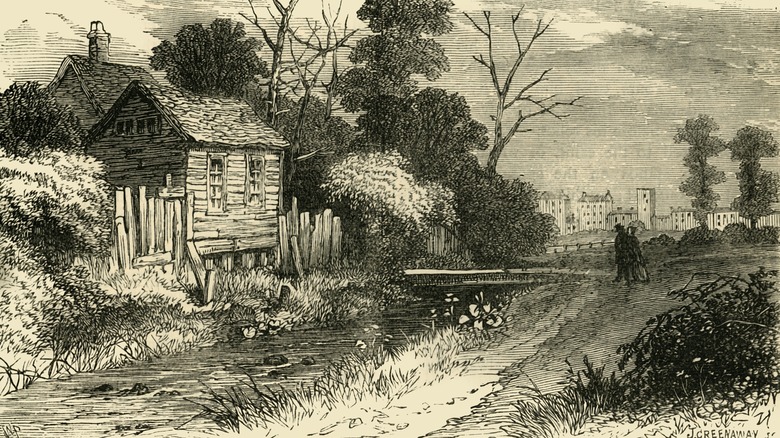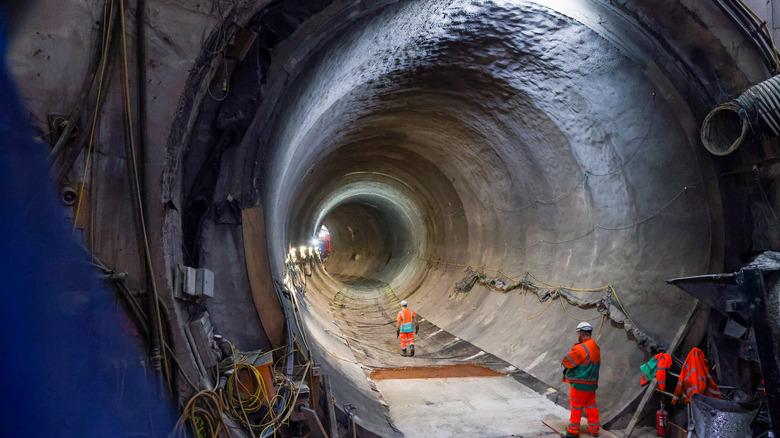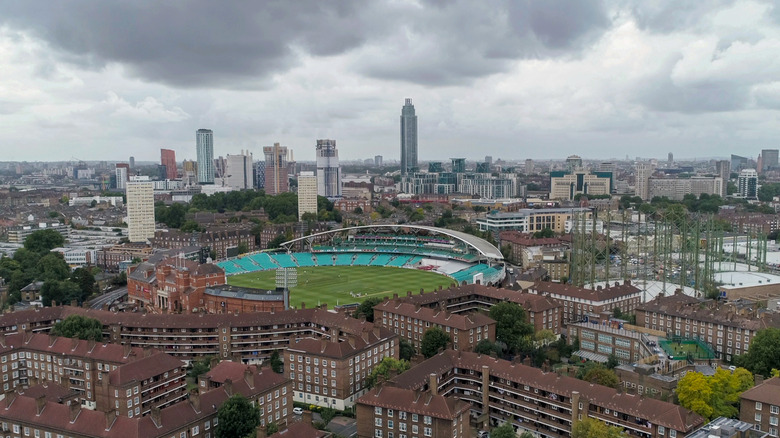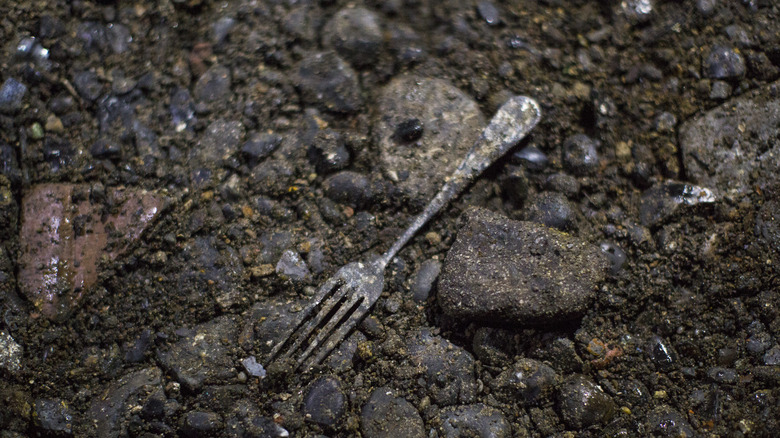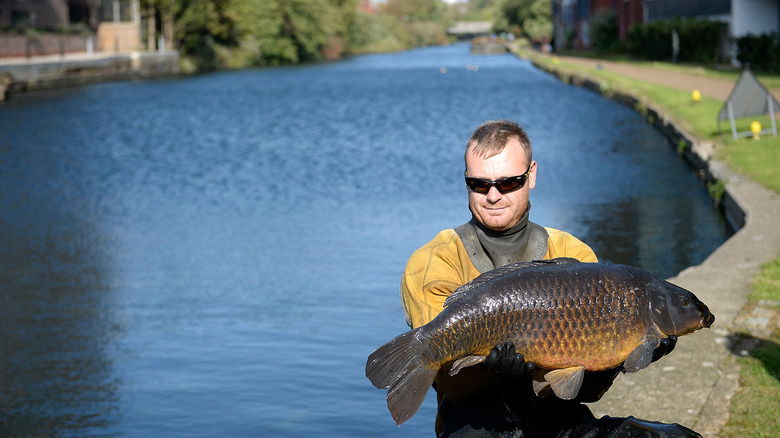The Secret History Of London's Lost Rivers
In the 1800s, London found itself at the center of the world as the capital of one of the most infamous colonialist countries. But despite the country's flourishing, life was as bleak for many Londoners then as it was for some of the most famous Charles Dickens characters.
London's streets in the 19th century were covered with the dung of some 300,000 horses, which people tried to convince themselves was just mud, per NPR. Thick clouds of smog and air pollution rose up from the factories. By the middle of the century, the River Thames had become flooded with human waste, dead animals, and discarded toxins from factories, creating what historians call the Great Stink (via Museum of London). It's no wonder Dickens' Ebenezer Scrooge in "A Christmas Carol" was a little grouchy.
Whether you're buying a hot cross bun from Greenwich Market or viewing the city from above on the London Eye, you can feel London's rich history bubbling up from the surface. But what you may not realize is you are probably also unsuspectingly standing above one of London's lost rivers, filled with much of this stink, buried just below the city streets.
Mapping the rivers
London's famous river Thames is responsible for much of the city's geography. Old London was situated on the river's north bank and the London Bridge was once the only bridge that connected the two halves of the city (per Amusing Planet). Today, there are more than two dozen bridges crossing over the river, while other channels of the Thames feeding into the city have since been covered by human development (via Amusing Planet).
After the Great Fire of London in 1666, the famous architect who built St. Paul's Cathedral, Christopher Wren, planned to rebuild the city like Venice, with bridges arching over canals all the way through the city (via Museum of London, BBC News). However, with a growing population, its growing waste problem, and no sewage system in which to put it, many of these canals and rivers became the designated sites for waste instead (via BBC News). In Oliver Twist, Dickens based Fagin's Den, a slum-like scene where the villain lives, on one particularly notorious polluted waterway, the Fleet River.
The Great Stink cover-up
Things came to a boiling point after the Great Stink in the summer of 1858, when hot temperatures made the smell unbearable (via Museum of London). Things got so bad that cholera and typhoid fever, thought to be transmitted by the smell but really transmitted through the makeshift sewage system, spread like wildfire. To protect the masses, Parliament passed a bill electing the Chief Engineer of the Metropolitan Board of Works at the time, Joseph Bazalgette, to do something about the sewage problem.
Essentially, Bazalgette designed the same model we use today in many of our major cities, with an underground system of sewers funneling waste, via BBC News. Many rivers like the Fleet were covered in brick, buried underground, and used to channel waste outside the city (via Museum of London). Today, dozens of rivers used for these purposes still exist below the city's surface.
The most famous lost rivers
According to The Guardian, up to 70% of the city's 370 miles of rivers have been buried or sent underground. The Fleet, which cuts through the Thames at Blackfriars from Hampstead Heath, is perhaps the best-known lost river, which can be traced above ground these days through a trail by Vale of Health (via Londonist). The Tyburn is particularly elusive, per The Guardian, but can be traced through Regents Park just under Buckingham Palace (via BBC News). Before being converted to a sewage pipe and used for waste, the Tyburn used to be home to some of the best salmon fishing in the city.
Walking with an ear to the ground in the absence of the honking horns of traffic, you can hear the trickling stream of the hidden Westbourne River feeding into the Serpentine in Hyde Park. The Effra is buried beneath the Oval cricket ground in South London, which held England's first international football match versus Scotland in 1870 (via BBC News, The Guardian).
What the rivers hold
The lost River Walbrook, originally used by the Ancient Romans, eventually came to power the Drapers and Tanners Halls, two neighboring buildings in northeast London, according to The Guardian. With industrialization, many historical artifacts were discovered, including skulls, sandals, coins, weapons, and tools. Historians think this spot, which they call "the Roman hole," used to be an old school trash can some 1,500 years ago that continues to flush out waste.
The Fleet river is thought to be the inspiration of dozens of writers in the 18th century, including Jonathan Swift in 1710, who wrote of the "dung, guts, and blood," and "drown'd puppies, stinking sprats, all drench'd in mud" (via The Guardian). In a 2019 exhibit by the Museum of London, a dog skull and a toilet seat discovered in this now-underground river were on display, along with other bones discarded from the Smithfield market.
Bringing them back?
Perhaps a better word for London's "lost" rivers would be "forgotten." Hidden underground, filled in with concrete, and used as a dump site for more than 100 years, many Londoners would probably not be too keen to pay them a visit. However, in the 1980s, wildlife enthusiasts began a campaign to beautify the rivers, according to The Guardian. Per BBC News, the Tyburn Angling Society is trying to restore the river in its namesake, bringing back wildlife and fishing to the sewage-filled waterway. But with restoration costs at roughly 500,000 euros per kilometer, and the amount of infrastructure above the river that would need to be destroyed (including the famous Buckingham Palace), the feasibility of doing so is questionable.
On the other hand, the Quaggy River has been successfully resurrected and is now enjoyed at Sutcliffe Park in south London (via The Guardian). More recently, innovative environmentalists have proposed using the city's underground rivers as a way to source heat without using fossil fuels, according to The Guardian. That's some kind of "clean" energy.
